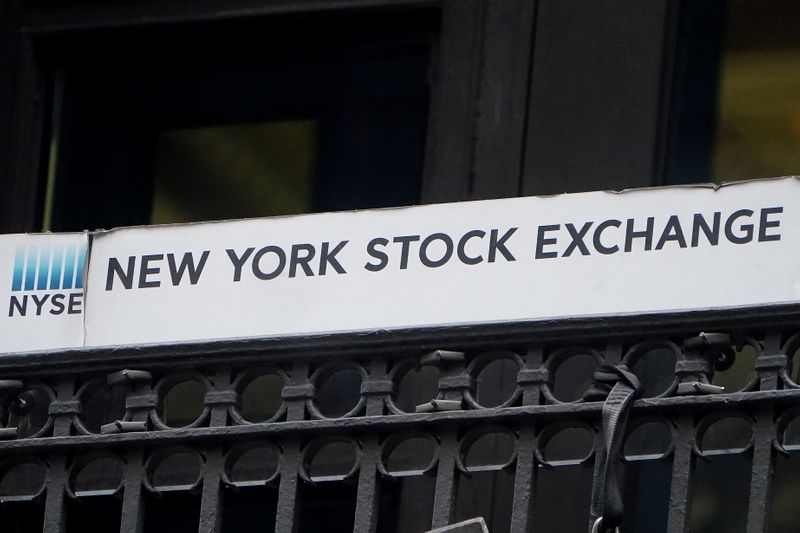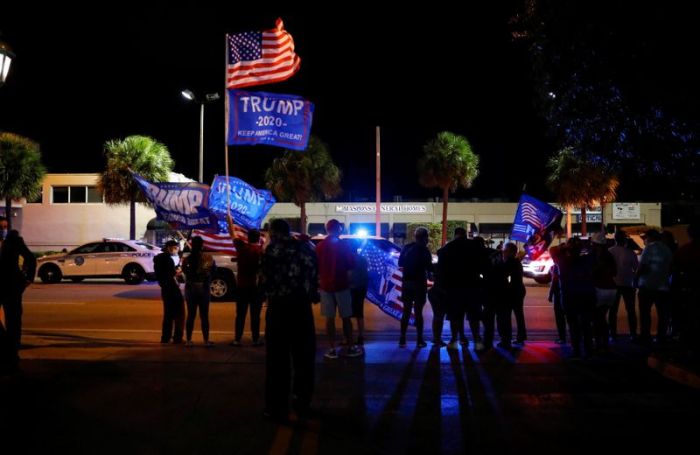NEW YORK (Reuters) – Investors were pulling back on expectations for big swings in U.S. stocks on Tuesday, looking for market uncertainty to recede after Election Day.
The Cboe Volatility Index <.VIX>, Wall Street’s “fear gauge,” declined as the S&P 500 <.SPX> climbed nearly 2% in part on anticipation of a clear presidential election outcome. [.N]
At 35.55, the VIX remained well above its long-term average near 20 and was implying more than 2% moves for the S&P 500. Moreover, options on the SPDR S&P 500 Trust <SPY.P>, an exchange-traded fund that tracks the benchmark U.S. stock index, were pricing in a 3.5% move by the end of the week, according to Christopher Murphy, co-head of derivatives strategy at Susquehanna Financial Group.
Some signs show investors expect volatility to fade once the election is in the rear-view mirror. The term structure for VIX futures is inverted, with short-dated contracts trading at higher prices than longer-dated contracts. That signals investor anxiety is most elevated in the near term.
The VIX term structure was partially inverted heading into the 2016 election, wrote Michael Purves, chief executive of Tallbacken Capital Advisors. Following that election, the VIX plummeted, and the term structure soon returned to its typical upward slope, signaling alleviation of near-term market worries.
The term structure may not revert as quickly this time, Purves wrote, given other concerns such as the novel coronavirus pandemic.
Even so, options activity suggests some investors have been positioning for greater calm in U.S. stocks. VIX puts have traded at higher volumes than VIX calls over the past month, a departure from the norm. VIX puts are used to position for declining volatility, whereas VIX calls are used to protect against climbing volatility.
That pattern continued on Tuesday, wrote Murphy, including two large purchases of VIX put spreads that would benefit from the index falling to the 20s, near its levels in August, about a month after the election.
“From a volatility standpoint, the sentiment seems to have shifted,” said Andrew Thrasher, portfolio manager at the Financial Enhancement Group.
(Reporting by April Joyner; Editing by Ira Iosebashvili, Dan Grebler and David Gregorio)



















